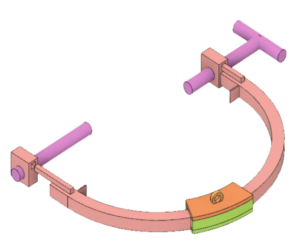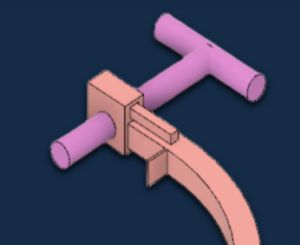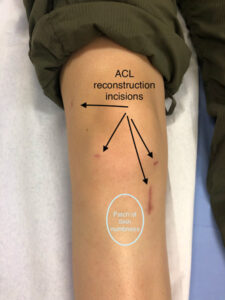We decided to adopt a stand alone design as opposed to a combined ACLR and LET in order to contribute a different perspective and as a means of exercising the options we had thought of at the time of concept generation. Also, ACLR surgery has a high success rate, so making a guide design that can also be used for ACLR is not necessary since surgical devices already work for it.
The prototype includes a C-shape structural body with a moving slot along the C-shape which can hold the drill and indicate the desired location and angle for drilling. Additionally, there is a support structure connected to the two ends of the C-shape which can be adjusted to let the indicators line up with the outside surface of the femur.


Our intention for the overall support system of the prototyping design phase was to be fully reliant on a clamping mechanism (above). This achieved our target goal of temporarily holding the drill guide in place by gripping onto the leg of the patient without making multiple incisions to do so. Reducing the number of portals or incisions made was unanimously an important consideration so we centered our design around that. While ACLR and ALLR procedures are considered minimally invasive, reducing the number of surgical incisions can only benefit the patient. These benefits include: less pain, faster recovery, less scarring for better cosmetic results, less risk of excessive bleeding, and less risk of infection. For reference, the figure below displays possible incision sites for ACLR. Given that an ALLR procedure is often executed after ACLR, we wanted to avoid the addition of multiple incisions.